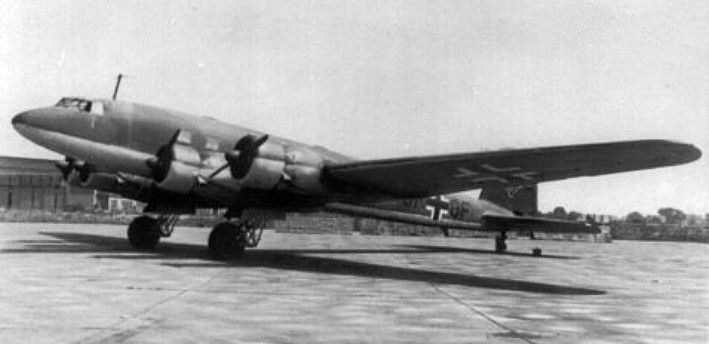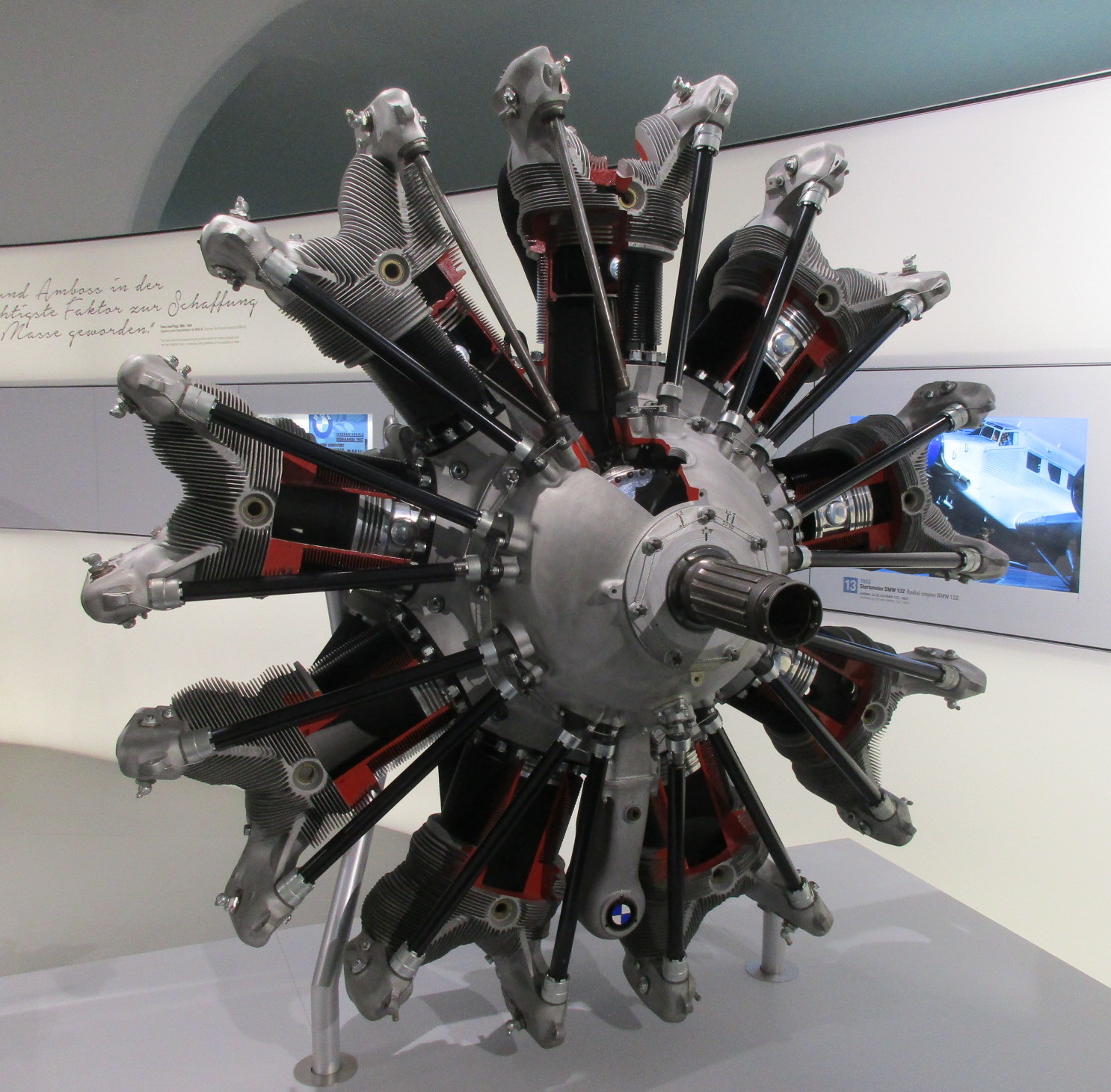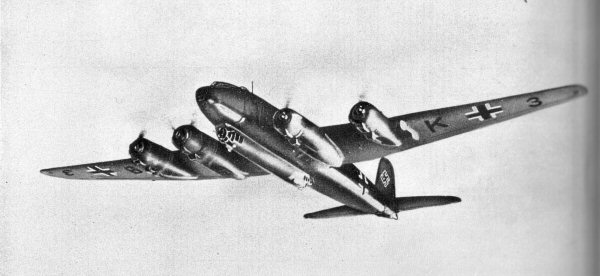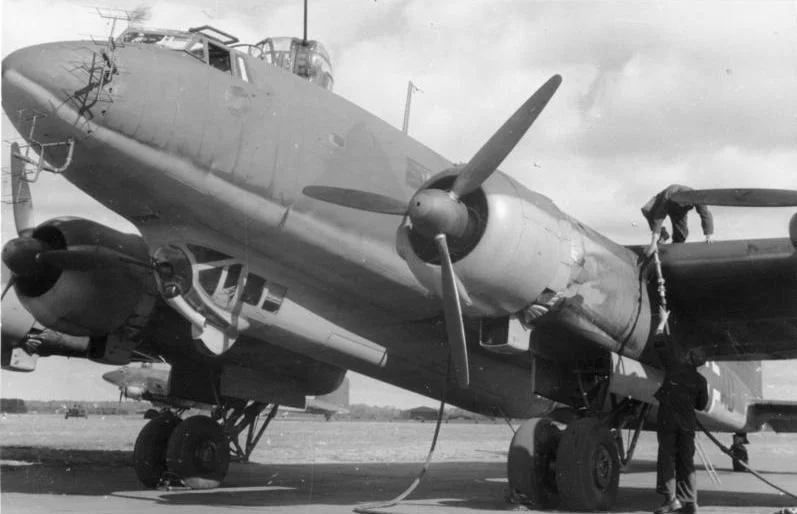
Fw 200 Condor – Civilian Airliner to Maritime Menace
The Focke-Wulf Fw 200 Condor, initially designed as a civilian airliner, evolved into a formidable maritime patrol aircraft during the Second World War.
It played a pivotal role in the Kriegsmarine’s efforts to disrupt Allied shipping across the Atlantic.
This article delves into the design, development, operational history, and the eventual impact of the Fw 200 Condor on the war effort.
Development
The design and development of the Fw 200 Condor epitomise the ingenuity and adaptability of pre-war German aviation engineering. Initially envisioned as a long-range commercial transport aircraft, the Fw 200’s journey from concept to combat aircraft is a fascinating tale of technological innovation and wartime necessity.
The Focke-Wulf Fw 200 Condor originated in response to a 1936 specification from Deutsche Lufthansa, Germany’s national airline, which sought a modern, long-range airliner capable of non-stop transatlantic flights.
 The Condor initially served as an airliner.
The Condor initially served as an airliner.
Kurt Tank, the chief designer at Focke-Wulf, took the lead on the project, aiming to create an aircraft that combined efficiency, range, and passenger comfort.
The initial prototype, the Fw 200 V1, took to the skies on 27 July 1937. This prototype featured a streamlined, low-wing monoplane design, powered by four American-built Pratt & Whitney Hornet radial engines.
The aircraft’s design prioritised aerodynamic efficiency, evident in its clean lines and retractable landing gear, which reduced drag and enhanced performance.
Technological Advancements
One of the standout features of the Fw 200 was its advanced autopilot system, developed by Siemens. This system significantly reduced pilot workload on long flights, making the Condor one of the most advanced aircraft of its era in terms of navigational capabilities.
Additionally, the aircraft boasted a pressurised cabin, a relatively rare feature at the time, which allowed it to maintain a comfortable environment for passengers at higher altitudes.
The Condor’s construction used a combination of aluminium and steel, with a semi-monocoque fuselage structure that provided both strength and reduced weight. The aircraft’s wings were designed with a high aspect ratio, improving lift-to-drag ratio and contributing to its impressive range and fuel efficiency.
 An early A variant used for transportation at the beginning of the war.
An early A variant used for transportation at the beginning of the war.
Transition to Military Use
With the onset of World War II, the Luftwaffe recognised the untapped military potential of the Fw 200. The transformation from a civilian airliner to a military patrol aircraft required significant modifications.
The most prominent changes involved the installation of bomb racks, defensive armament, and enhanced communication and navigation systems.
The militarized version designated the Fw 200C, featured reinforced airframes to accommodate the additional weight of bombs and guns. The aircraft was armed with a mix of 7.92 mm MG 15 machine guns and 20 mm MG 151 cannons, strategically placed to provide comprehensive defensive coverage.
The bomb load capacity varied, but it typically included up to four 250 kg bombs or a mix of bombs and mines for anti-shipping operations.
The Condor’s navigational suite was significantly upgraded for its new role. This included the addition of radio direction-finding equipment, which enabled precise position tracking and coordination with German U-boats.
The Lorenz blind-landing system, initially intended for civilian use, proved invaluable for military operations, allowing the Condor to operate effectively in adverse weather conditions and during night missions.
Engine and Performance Enhancements
As the aircraft transitioned to its military role, its original Pratt & Whitney engines were replaced with German BMW 132 engines in the Fw 200C variants.
These engines provided slightly improved performance and simplified logistics for the Luftwaffe, which preferred to use domestically produced engines. At the heart of the Fw 200 was the BMW 132 engine – a licence-built P&W Hornet. Photo credit – Arnaud 25 CC BY-SA 4.0.
At the heart of the Fw 200 was the BMW 132 engine – a licence-built P&W Hornet. Photo credit – Arnaud 25 CC BY-SA 4.0.
Despite these enhancements, the Fw 200 faced limitations due to its original design as a civilian aircraft. The airframe, not designed to withstand the stresses of combat, sometimes suffered from structural failures, particularly during heavy anti-aircraft fire or rough weather.
Moreover, the added weight of military equipment and armament impacted its speed and manoeuvrability, making it vulnerable to Allied fighters.
Production and Variants
The Fw 200A marked the first production version designed for Lufthansa. It featured four Pratt & Whitney Hornet radial engines, a sleek fuselage, and accommodations for 26 passengers.
This version demonstrated the Condor’s potential as a long-range airliner, completing several notable flights, including a non-stop journey from Berlin to New York.
Building on the success of the Fw 200A, the Fw 200B introduced several enhancements. These included more powerful BMW 132 engines and structural reinforcements to handle increased operational demands.
The Fw 200B showcased improved performance, range, and reliability, further establishing the Condor as a premier long-distance aircraft.
Fw 200C-1
The transition to military use began with the Fw 200C-1, the first variant specifically modified for the Luftwaffe. This version included significant changes, such as the installation of bomb racks capable of carrying up to 1,000 kg of ordnance.
The C-1 also featured defensive armament, including 7.92 mm MG 15 machine guns and 20 mm MG 151 cannons, strategically placed to defend against enemy fighters.
 Quickly after the war broke out the Fw 200 was militarised.
Quickly after the war broke out the Fw 200 was militarised.
Engine upgrades saw the replacement of the original Pratt & Whitney engines with BMW 132 engines, enhancing both power and logistical compatibility with other Luftwaffe aircraft.
These modifications allowed the Fw 200C-1 to undertake long-range maritime patrol and anti-shipping missions, marking its entry into combat operations.
Fw 200C-2 and Fw 200C-3
The Fw 200C-2 followed, incorporating refinements based on combat experience. Improved defensive armament included additional machine gun positions and better protection for the crew.
The C-2 also featured enhancements in navigational equipment, allowing for more precise coordination with U-boat operations.
The Fw 200C-3 introduced further advancements. More powerful engines provided better performance and reliability, addressing some of the earlier variants’ vulnerabilities.
This version also saw the introduction of advanced radar systems, which improved target acquisition and tracking capabilities, making the Condor even more effective in its maritime patrol role.
Fw 200C-4 and Fw 200C-6
The Fw 200C-4 represented a significant leap in technology. It included the FuG Rostock search radar, which enabled the detection of enemy ships and aircraft at greater distances.
This radar enhancement allowed the Condor to operate more effectively in its reconnaissance and anti-shipping roles. The C-4 also featured structural improvements, addressing some of the airframe weaknesses identified in earlier models.
The Fw 200C-6 was a specialised variant developed for electronic warfare. It carried advanced radio jamming equipment designed to disrupt Allied communications and radar.
Fw 200C-8
The Fw 200C-8, one of the last variants produced, incorporated all the advancements of previous models. It featured more powerful engines, enhanced defensive armament, and the latest radar and navigational technology.
The C-8 could carry a greater payload of bombs and mines, increasing its effectiveness in maritime interdiction operations. This variant also had improved armour protection for the crew, addressing the vulnerabilities exposed in earlier combat experiences.
 Later versions had defensive armament. Photo credit – Bundesarchiv Bild 101I 482 2874 03A Guntzel CC BY-SA 3.0
Later versions had defensive armament. Photo credit – Bundesarchiv Bild 101I 482 2874 03A Guntzel CC BY-SA 3.0
Fw 200S and Fw 200D
Specialised transport variants, the Fw 200S and Fw 200D, emerged to fulfil different roles. The Fw 200S was designed for long-range transport missions, often used to carry high-ranking officials or valuable cargo.
It retained the Condor’s range and reliability while modifying the interior for passenger comfort and cargo space.
The Fw 200D focused on increasing operational efficiency for transport missions. This variant featured enhanced engines and structural modifications to handle greater payloads and longer distances. It played a crucial role in logistical operations, moving supplies and personnel across occupied Europe and North Africa.
Operational History
The Focke-Wulf Fw 200 Condor played a critical role in Germany’s wartime strategy, particularly in the Battle of the Atlantic. Its operational history is marked by a series of strategic deployments, notable engagements, and eventual obsolescence due to evolving Allied countermeasures.
In early 1940, the Luftwaffe assigned the Fw 200 to Kampfgeschwader 40 (KG 40), which operated from bases in France and Norway.
The Condor’s primary mission was maritime patrol and reconnaissance, utilising its long-range to shadow Allied convoys and direct U-boat attacks. Early operations saw the Condor providing valuable intelligence on convoy movements, which proved instrumental in coordinating the Kriegsmarine’s wolfpack tactics.
The first significant success of the Fw 200 came in August 1940, when Condors began flying long-range reconnaissance missions over the Atlantic. These missions demonstrated the aircraft’s capability to cover vast distances, reaching as far as the United States’ East Coast.
The Condor’s ability to loiter over convoys for extended periods allowed it to relay crucial information to U-boat commanders, increasing the effectiveness of submarine attacks.
 An Fw 200 Condor was the first German aircraft to be shot down by a US fighter. It was on patrol over Iceland.
An Fw 200 Condor was the first German aircraft to be shot down by a US fighter. It was on patrol over Iceland.
Combat Engagements
The Condor soon transitioned from reconnaissance to active combat roles. Armed with bombs and mines, the Condor launched attacks on merchant shipping, becoming a significant threat to Allied supply lines.
One of the most notable engagements occurred on 26 October 1940, when a Condor from KG 40 sank the 42,000-ton British ocean liner RMS Empress of Britain, which was being used as a troopship. This demonstrated the Condor’s potential to inflict substantial damage on high-value targets.
Throughout 1941 and 1942, the Fw 200 continued to wreak havoc on Allied shipping. Its ability to carry up to four 250 kg bombs allowed it to damage or sink numerous merchant vessels, contributing to the severe losses the Allies experienced in the Atlantic.
The aircraft’s presence forced the Allies to divert resources to convoy protection, stretching their naval forces thin.
Tactical Adaptations
The Luftwaffe continuously sought to enhance the Condor’s effectiveness. Upgrades included improved defensive armament, radar systems, and more powerful engines. Despite these enhancements, the aircraft’s original design as a civilian airliner imposed inherent limitations.
The Condor’s structural integrity remained a concern, with several instances of catastrophic failure under combat conditions.
In response to the increasing threat posed by Allied aircraft, the Luftwaffe adapted its tactics. Condors began operating in pairs or small groups to provide mutual support and increased defensive firepower.
Additionally, they utilised cloud cover and the vast expanse of the Atlantic to evade enemy fighters. These adaptations, while somewhat effective, could not fully mitigate the vulnerabilities of the Condor.
Allied Countermeasures
As the Allies recognised the threat posed by the Fw 200, they developed effective countermeasures. The introduction of long-range fighters, such as the American P-51 Mustang and the British De Havilland Mosquito, allowed Allied forces to extend their aerial coverage over the Atlantic.
These fighters posed a significant threat to the relatively slow and unmanoeuvrable Condor.
 The Condor became unviable in the anti-ship role later in the war
The Condor became unviable in the anti-ship role later in the war
The Allies also improved convoy defences by employing more escorts, including destroyers and corvettes equipped with anti-aircraft guns and radar. Merchant ships were armed and trained to coordinate their defensive efforts, further diminishing the Condor’s effectiveness.
Additionally, the development of ship-borne radar and improved communication systems enabled convoys to detect and respond to Condor sightings more effectively.
By mid-1943, the combined effect of these countermeasures significantly reduced the Condor’s impact. The loss rates of Fw 200s increased as they encountered more frequent and effective opposition.
The Luftwaffe’s inability to replace lost aircraft and crews at a sustainable rate further weakened their operational capacity.
Decline and Obsolescence
The later years of the war saw the gradual decline of the Fw 200’s operational relevance. The introduction of more advanced maritime patrol aircraft, such as the Junkers Ju 290, offered improved performance, range, and defensive capabilities. These newer aircraft began to replace the Condor in frontline units.
Despite its diminishing role, the Fw 200 continued to see service until the final months of the war. It was employed in various secondary roles, including transport and reconnaissance in less contested areas.
The Condor’s legacy, however, was cemented by its early successes and the significant disruption it caused to Allied shipping during the critical years of the Battle of the Atlantic.
News
The Hanging Temple: China’s 1,500-Year-Old Cliffside Marvel of Faith and Engineering
The Hanging Temple: China’s 1,500-Year-Old Cliffside Marvel of Faith and Engineering Perched precariously on the cliffs of Mount Heng in Shanxi Province, China, the Hanging Temple, also known as Xuankong Temple, Hengshan Hanging Temple, or Hanging Monastery, is an architectural…
The Willendorf Venus: A 30,000-Year-Old Masterpiece Reveals Astonishing Secrets
The Willendorf Venus: A 30,000-Year-Old Masterpiece Reveals Astonishing Secrets The “Willendorf Venus” stands as one of the most revered archaeological treasures from the Upper Paleolithic era. Discovered in 1908 by scientist Johann Veran near Willendorf, Austria, this small yet profound…
Unveiling the Maya: Hallucinogens and Rituals Beneath the Yucatán Ball Courts
Unveiling the Maya: Hallucinogens and Rituals Beneath the Yucatán Ball Courts New archaeological research has uncovered intriguing insights into the ritual practices of the ancient Maya civilization. The focus of this study is a ceremonial offering found beneath the sediment…
Uncovering the Oldest Agricultural Machine: The Threshing Sledge’s Neolithic Origins
Uncovering the Oldest Agricultural Machine: The Threshing Sledge’s Neolithic Origins The history of agricultural innovation is a fascinating journey that spans thousands of years, and one of the earliest known agricultural machines is the threshing sledge. Recently, a groundbreaking study…
Nara’s Ancient Sword: A 1,600-Year-Old Protector Against Evil Spirits
Nara’s Ancient Sword: A 1,600-Year-Old Protector Against Evil Spirits In a remarkable discovery that has captured the attention of archaeologists and historians alike, a 7.5-foot-long iron sword was unearthed from a 1,600-year-old burial mound in Nara, Japan. This oversized weapon,…
The Inflatable Plane, Dropped Behind the Lines for Downed Pilots
Experimental The Inflatable Plane, Dropped Behind the Lines for Downed Pilots The Inflatoplane from Goodyear was an unconventional aircraft developed by the Goodyear Aircraft Company, a branch of the renowned Goodyear Tire and Rubber Company, also famed for the Goodyear…
End of content
No more pages to load











